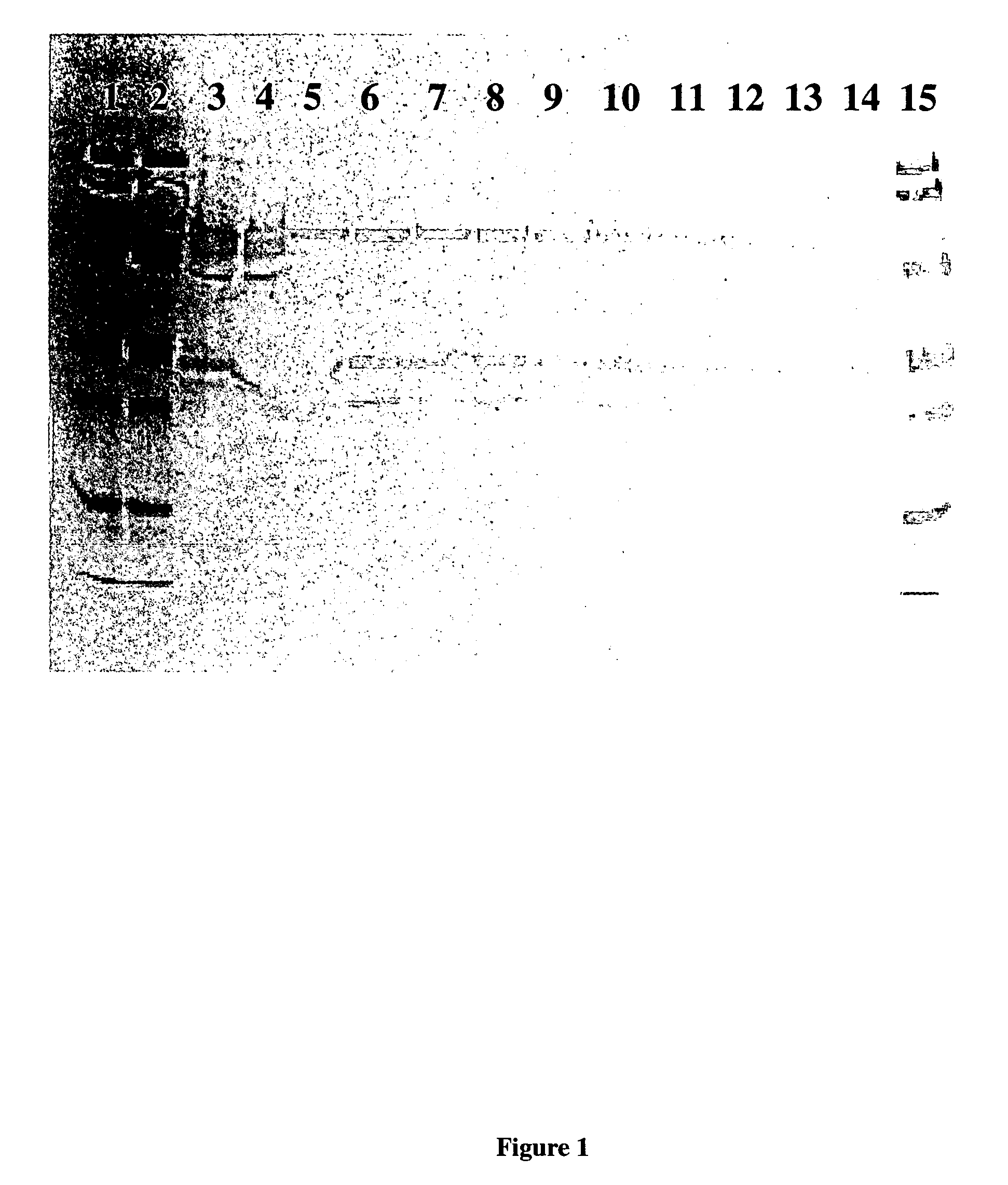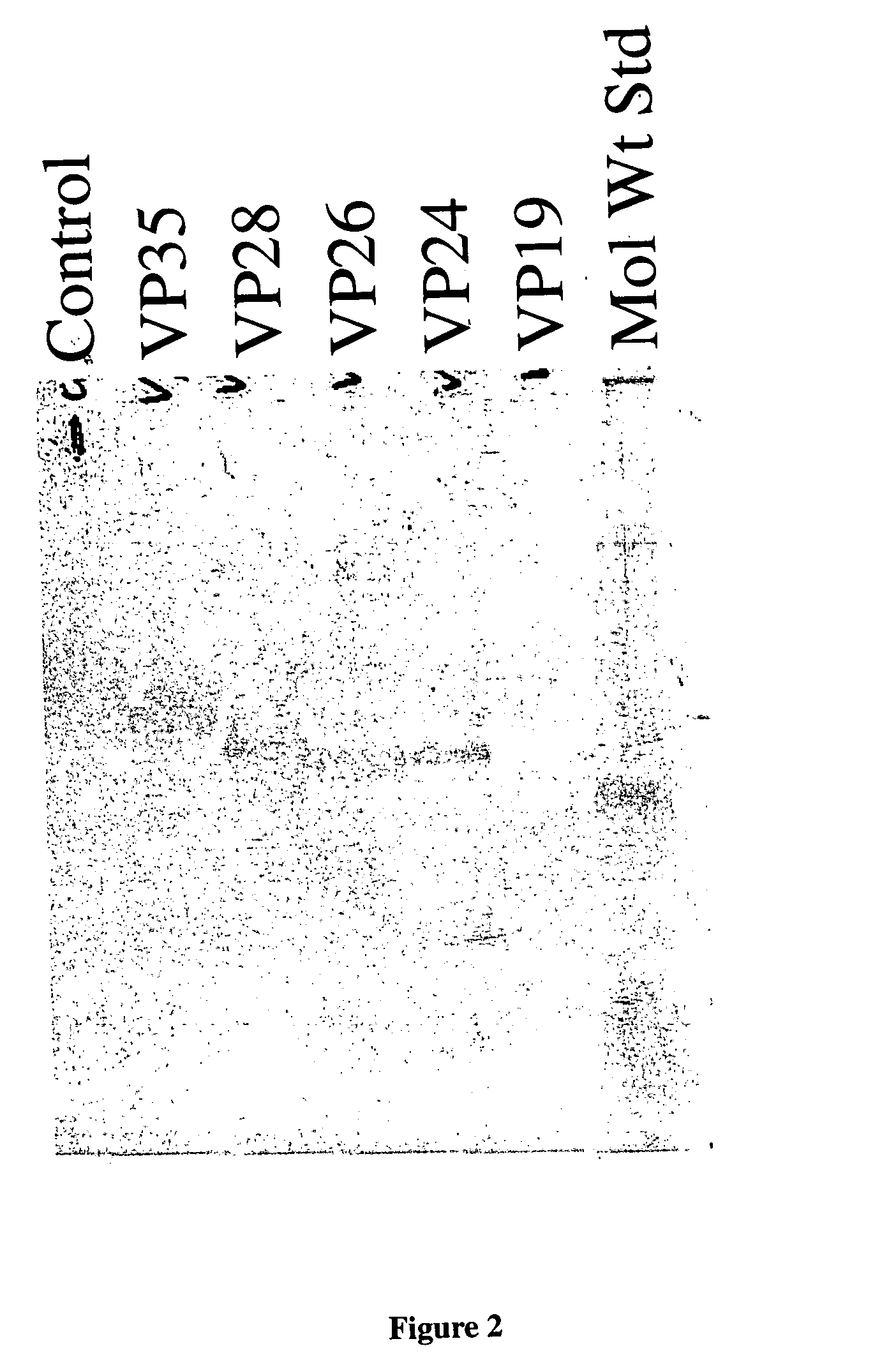Delivery of disease control in aquaculture and agriculture using microbes containing bioactive proteins
a technology of bioactive proteins and delivery systems, applied in the field of animal feeds, can solve the problems of crude fermentation broths or crude preparations including cells, crude preparations of crude microorganisms, and no use of recombinant microorganisms in agriculture or agriculture, and achieve the effects of reducing the number of microorganisms, and reducing the number of antibiotics
- Summary
- Abstract
- Description
- Claims
- Application Information
AI Technical Summary
Problems solved by technology
Method used
Image
Examples
example
Example 1
[0054] Selection of Useful Microbial Sources for Feeds that Provide Disease Control. Microalgal biomass samples, aqueous extracts, organic extracts, and extracts from the growth medium after cultivation of the algae were concentrated and spotted on filter paper discs. Using sterile techniques, these discs were then placed on agar plates overlaid with a lawn of selected test organisms including, but not limited to, gram-negative bacteria, gram-positive bacteria, antibiotic resistant bacteria, yeast, or other fungi. After incubation for an appropriate length of time to allow growth of the lawn of test organism, the plates were observed for zones of clearing (non-growth) around the filter paper discs. Large zones of clearing indicate potent antibiotic activity; small zones of clearing indicate less potent antibiotic activity.
example 2
[0055] Incorporation of an Antibody into an Algal Feed. A particular viral or bacterial pathogen is chosen and used to prepare monoclonal antibodies using procedures well known to those in this field (Harlow and Lane, eds., 1988. Antibodies: A Laboratory Manual, Cold Spring Harbor Laboratory Press). Gene(s) coding for this antibody or an appropriate antibody fragment (F.sub.ab or F.sub.v) are isolated and amplified in the appropriate vector. The gene is spliced into a transformation vector suitable for a eukaryotic alga (e.g. Chlorella) or a prokaryotic alga (e.g. Synechocystis), or a yeast (e.g. Saccharomyces) or a fungus (e.g. Mortierella). The transformation vector is chosen so that the antibody will be over-expressed in the microbial cell biomass. This biomass is then used as a feed additive in such a way as to provide the antibody directly to the animal, thus providing passive immunity.
example 3
[0056] Expression of a Bactericidal Protein in a Microbial Feed. A bactericidal protein is chosen for the particular application. For example, proteins of the penaeidin class may be chosen for pathogenic control in shrimp. Penaeidins are members of a family of antimicrobial peptides isolated from crustaceans (e.g., Penaeid shrimp). Antimicrobial peptides can also come from insects and chelicerates, and can include, but are not limited to, cecropins, peneaidins, bactenecins, callinectins, myticins, tachyplesins, clavanins, misgunins, pleurocidins, parasins, histones, acidic proteins, and lysozymes. The gene for the chosen protein or peptide is either isolated from the original source, an amplification source, or made synthetically. The gene is then incorporated into a transformation vector suitable for a eukaryotic alga (e.g. Chlorella) or a prokaryotic alga (e.g. Synechocystis), or a yeast (e.g. Saccharomyces) or a fungus (e.g. Mortierella). The transformation vector is chosen so th...
PUM
| Property | Measurement | Unit |
|---|---|---|
| Therapeutic | aaaaa | aaaaa |
| Immunogenicity | aaaaa | aaaaa |
Abstract
Description
Claims
Application Information
 Login to View More
Login to View More - R&D
- Intellectual Property
- Life Sciences
- Materials
- Tech Scout
- Unparalleled Data Quality
- Higher Quality Content
- 60% Fewer Hallucinations
Browse by: Latest US Patents, China's latest patents, Technical Efficacy Thesaurus, Application Domain, Technology Topic, Popular Technical Reports.
© 2025 PatSnap. All rights reserved.Legal|Privacy policy|Modern Slavery Act Transparency Statement|Sitemap|About US| Contact US: help@patsnap.com


